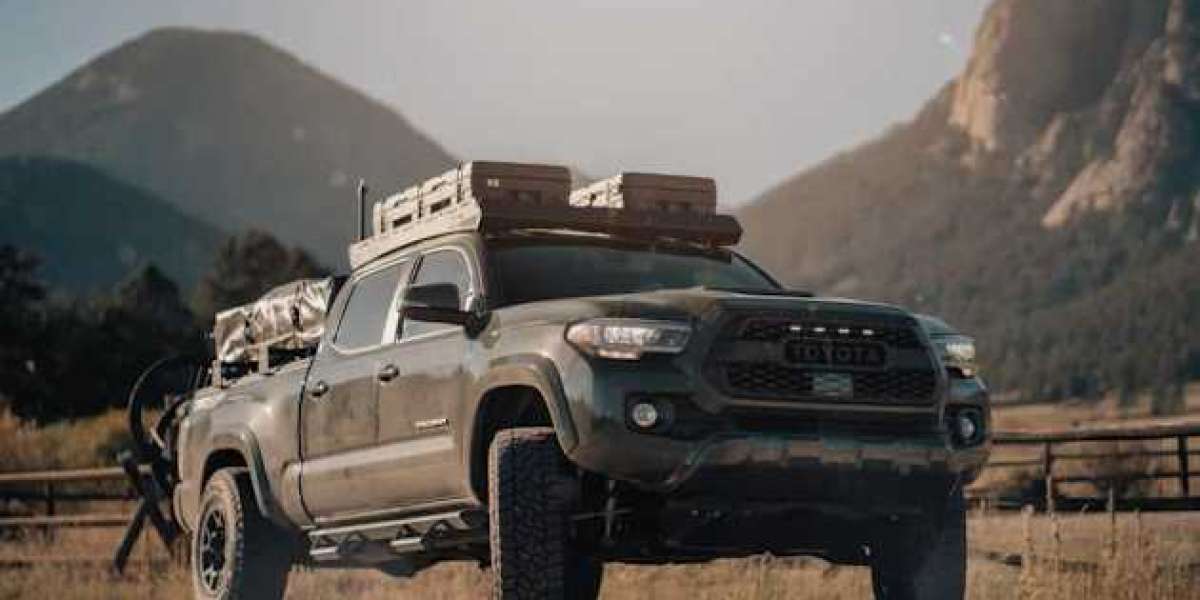When it comes to car accessories, few items are as practical and popular as a roof rack. Whether you’re an outdoor enthusiast with bikes and kayaks or a parent on a family road trip needing extra space, roof racks offer valuable storage solutions. But while they’re super convenient, many drivers wonder: What’s the impact of a roof rack on my car’s performance and fuel efficiency?
Let’s break it all down in simple terms, from how roof racks work to how they can affect your gas mileage, speed, and overall driving experience.
What Is a Roof Rack, and Why Do People Use It?
Before we dive into performance and fuel consumption, let’s cover the basics.
A roof rack is a set of bars or rails installed on the top of your vehicle. It allows you to carry bulky items like:
Luggage
Bicycles
Kayaks and canoes
Surfboards
Skis and snowboards
Cargo boxes
They’re handy when your trunk space is limited, or you simply need to carry more than your car’s interior allows.
But as great as they are for storage, roof racks can change the way your car behaves on the road. Here’s how.
1. Roof Racks and Fuel Efficiency
How Do Roof Racks Impact Fuel Economy?
Let’s start with the big question on most drivers’ minds: Will a roof rack make my car burn more fuel?
In short: Yes—but how much depends on several factors, such as the size of the rack, what’s loaded onto it, and how fast you drive.
The Science Behind It
When you install a roof rack, you're changing your car's aerodynamics. Your vehicle is designed to be as streamlined as possible so it can slice through the air with minimal resistance. Adding a roof rack disrupts this smooth flow, creating drag, which is basically the wind pushing back against your car.
Even an empty roof rack can increase drag and lower fuel efficiency. Add cargo to that rack—especially big, boxy items—and you can expect a noticeable drop in your miles per gallon (MPG).
Real-World Stats
According to several studies (including ones conducted by the U.S. Department of Energy), a loaded roof rack can reduce fuel economy by as much as 15-25% on the highway. An empty roof rack might lower efficiency by around 1-5%.
So while it may not seem like a big deal on a short trip, over time—or on long road trips—those extra gas stops can add up.
2. Roof Racks and Vehicle Performance
Handling and Stability
One thing many drivers don’t consider is how a roof rack affects their car’s handling. When you place cargo on top of your car, you’re raising its center of gravity. This can make your car feel less stable, especially when:
Turning sharp corners
Driving on winding roads
Dealing with crosswinds
Making sudden maneuvers
Heavier or unevenly distributed loads can amplify these issues, increasing the risk of swaying or tipping in extreme cases.
Speed and Acceleration
Carrying extra weight on your roof doesn’t just affect stability—it can slow you down, too. Your engine has to work harder to move both the weight and fight air resistance. This results in:
Slower acceleration
Reduced top speed
A louder engine (especially if you're driving uphill)
If you're towing or hauling a lot of gear for an outdoor trip, keep this in mind before heading into mountainous terrain or merging onto highways.
3. Roof Racks and Tire Suspension Wear
Extra Strain on Your Car
The additional weight of a roof rack and cargo puts more pressure on your car’s suspension system and tires. This can lead to:
Faster tire wear
Greater stress on shocks and springs
A rougher ride
It’s not something you’ll notice after one trip, but over time, these parts can wear out faster if your car is regularly carrying extra weight up top.
4. Roof Racks and Safety Concerns
Height Clearance
One of the most common issues with roof racks is forgetting how tall your vehicle becomes once it’s loaded. If you’ve ever seen someone try to enter a parking garage with a kayak on the roof, you know what we’re talking about.
To stay safe:
Always measure the new height of your vehicle
Watch for clearance signs in garages, underpasses, and drive-thrus
Be extra cautious when entering tight spaces
Secure Loading
Poorly secured items can become dangerous projectiles if you stop suddenly or get into an accident. Always:
Double-check straps and fasteners
Use locks or brackets for bikes and cargo boxes
Avoid overloading the rack beyond the manufacturer’s weight limit
5. Do You Always Need to Keep the Roof Rack On?
No! If you're not actively using your roof rack, it’s a good idea to take it off. Here’s why:
Better fuel economy
Quieter ride (less wind noise)
Reduced wear on your roof and rack system
Some racks are easy to remove when not in use, while others require a bit more effort. But if you only use it occasionally, removing the rack when it’s not needed can save you money in the long run.
6. When Is a Roof Rack Worth It?
Despite some drawbacks, a roof rack is an incredibly useful tool. If you love road trips, outdoor adventures, or just need extra space for gear, the trade-off in fuel economy may be worth it.
Here are situations when having a roof rack is a great idea:
Family vacations: Carry extra luggage or camping gear
Sports/outdoor trips: Bring along your bikes, skis, or surfboards
Moving day: Use it to haul light furniture or boxes
Weekend getaways: Free up space inside the vehicle for passengers
Just be smart about how you use it and keep the impact on your car’s performance in mind.
Tips to Minimize Roof Rack Impact
Want the convenience without losing too much in gas mileage or performance? Try these tips:
Remove the rack when not in use.
Use aerodynamic designs. Some modern racks are built to reduce wind drag.
Pack light and low. Keep your cargo centered and as flat as possible.
Use cargo bags instead of boxes. Soft bags create less drag.
Drive slower. Even reducing your speed by 5-10 mph can offset fuel loss.
Check your tire pressure. Extra weight can lower your tire pressure, which further hurts MPG.
Final Thoughts
A roof rack can slightly reduce your fuel efficiency and alter how your car handles—but it also adds tremendous flexibility, especially for travelers and outdoor lovers. Like any car accessory, it’s all about how and when you use it.
If you drive a lot with a rack and cargo on top, expect to spend a bit more on gas and maybe even deal with a noisier ride. But if you only use it occasionally and follow best practices, you can enjoy the benefits without suffering major downsides.
So go ahead—gear up, plan your trip, and hit the road with confidence. Just don’t forget to check your clearance signs!
FAQs
1. How much will a roof rack lower my fuel efficiency?
An empty roof rack can reduce fuel economy by about 1–5%, while a fully loaded one can cause up to a 25% drop—especially at highway speeds.
2. Is it okay to leave my roof rack on all the time?
You can, but it’s not recommended if you’re not using it. Removing it can improve gas mileage, reduce wind noise, and prolong the life of your rack and car roof.
3. Can any car have a roof rack?
Most cars can be fitted with a roof rack, but you’ll need the right type. Some vehicles have factory-installed mounting points, while others may need clamp-on systems or crossbars. Always check compatibility before buying.








